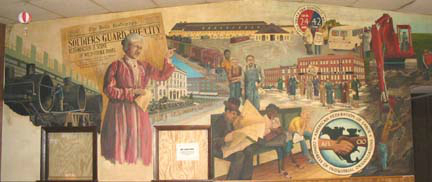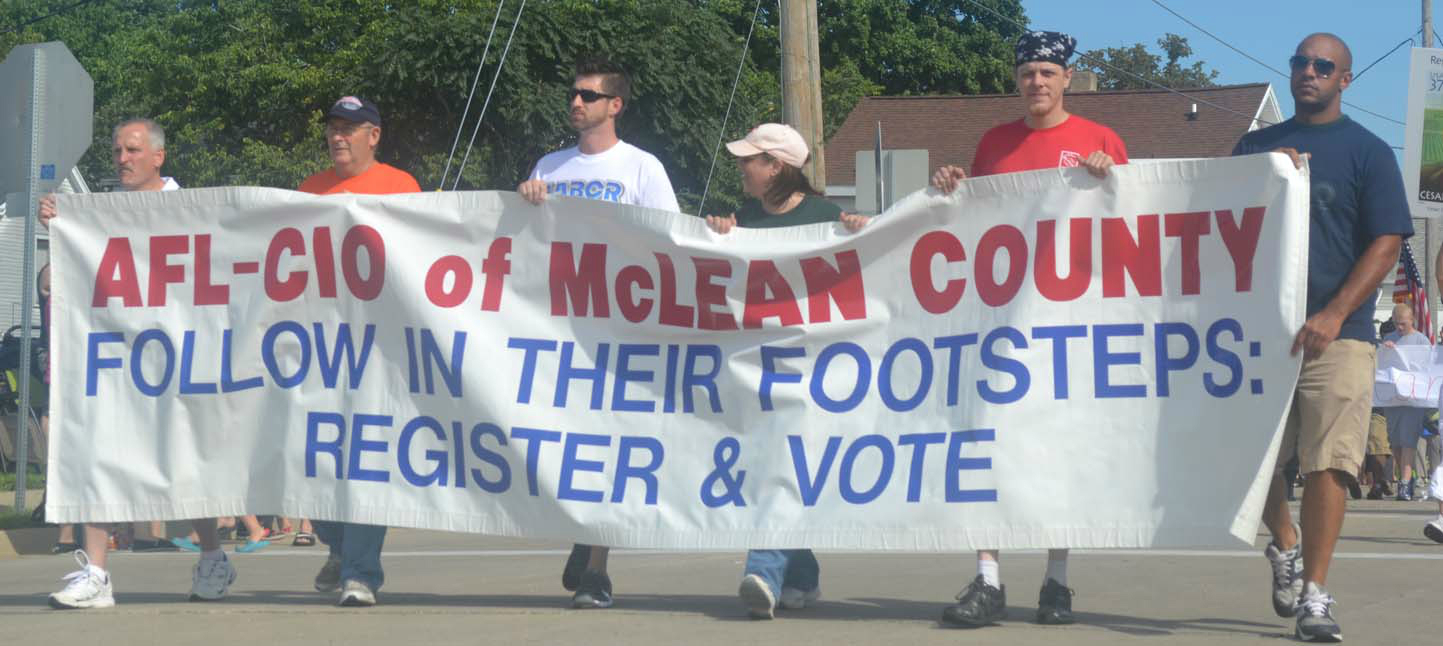|
With union banners flying, dressed in starched shirts and blouses and wearing union emblems, Illinois workers marched on Labor Day a century ago.
In the Quad Cities, the tradition was for the parade to alternate sides of the Mississippi River; 1920 was Davenport, Iowa’s turn to host, the Moline Dispatch reporting that the “majestic parade” was accompanied by “cheers from thousands of voices. … the men appeared to best advantage in clean, attractive uniforms common to their particular line of work.” Although the paper credits the men, it was female workers who filled the first of four parade divisions. A week later the YMCA in East Moline was showing parade stereopticon slides and movie films.
Bloomington workers did not march, instead holding a joint picnic with the Farmer-Labor Party at Lake Park, with thousands enjoying a carnival, midway attractions and a dance. The guest speaker was William Z. Foster, organizer of the previous year’s steel strike, then business manager of the Chicago Federation of Labor’s New Majority newspaper and future Communist Party U.S.A. leader. Foster recounted the steel strike’s brutality and admonished the crowd, “We’ve got to stop electing so-called ‘friends of labor’ and elect labor itself.” Following his speech children faced off in cream puff, pie, doughnut and peanut eating contests.
In Decatur, there were three divisions in the parade, totaling 1,700 marchers, with railroad operating and repair Shops crafts filling a whole division. Besides the Building Trades, local unions of cigarmakers, streetcar men, tailors, bookbinders, interurban trainmen and others filled another section. On their float Boilermakers rang a locomotive bell and pounded sledges with heavy hammers. The Parade marched from downtown Decatur to Fairview Park, where there was a concert, a baseball game between the building trades and allied crafts, speeches and a dance.
At the picnic, George Lakey, Carpenters’ second Vice-President, addressed the throng, welcoming women’s newly won right to vote, hoping it would help uphold decent standards and end child labor. “Cheap politicians will do well to remember they cannot buy a woman’s vote with a drink of cheap whiskey or a cabbage leaf cigar,” he counseled.
In Alton the Evening Telegraph reported that the event was “larger than usual. A striking feature of the parade was the number of women who participated in it.” Workers from Federal Lead Smelting were on strike and marched en-masse and the Boilermakers’ float featured members “working” to display their skills.
Joliet’s parade featured 15,000 marchers in three divisions, and for the second year in a row, the Bakery & Confectionery Workers won the “Best Representation” cup, as they marched carrying cakes and loaves of bread. Converging at Dellwood Park, airplane acrobatics, a baby show and a dance followed Aurora Mayor W. H. Townsend, a union electrician, speaking for the Farmer-Labor Party.
In East St. Louis the parade was declared the “largest” in recent years there, taking 40 minutes to pass. Strikers’ from the railroad Yardmen’s Association were out in force, along with their Ladies’ Auxiliary. The large delegation of women union workers was noted.
In Southern Illinois workers converged from multiple cities to march in Murphysboro, the largest delegation from Marion. Local labor leadership was “elated,” according to the Carbondale Free Press, which noted that “the absence of the usual number of arrests for drunkenness was marked.”
The “City of the Big Shoulders” had no formal Labor Day parade, though many traveled to Benton Harbor, Michigan, to watch prizefighters Jack Dempsey knock out Billy Miske. Four Chicago beaches were closed early due to low funds, depriving many city residents of a swimming and a day in the sun.
|



